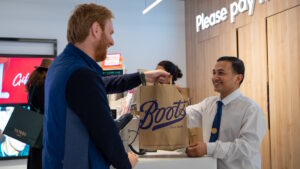Alex Rahaman, CEO of NEXD, and NDA’s monthly columnist, is an adtech pioneer, founding the first mobile DSP, StrikeAd.
Cooped up at home, trying to be a responsible citizen and avoiding the spread of Coronavirus, I’ve been catching up on some industry reading. And I must admit there’s one article in particular which has caught my eye this month and that’s Digiday’s “Why Mars is more interested in measuring attention, not impressions”.
Mars is different to many other advertisers. Rather than overly focusing on targeting, what it believes is important is the creativity behind the ad. In fact, its past experience has shown that good creative has a huge impact on ROI – up to 10 times the difference.
And they’re known for their creative ads. Just think back to their Maltesers campaign a couple of years ago which put disabled people up front to discuss the awkward social situations they’ve experienced with the tagline “Look on the light side of disability”. Not only did sales increase by 8.1%, brand affinity grew by 20%, with Mars VP Marketing Michele Oliver calling it the best, most effective ad campaign it had run for Maltesers in 10 years.
Mars’ Director of Consumer Insights for Media and Creative, Sorin Patilinet explains why creativity is so key: “We’ve found that format choices and even frequency increases won’t get us the same returns as a great ad so our aim is to identify the non-performing ads and make them great.”
For this reason, it is also considering using attention metrics to help it in its media buying decisions, rather than relying on impressions.
Attention metrics aren’t a new phenomenon, but many advertisers have shied away from using them in favour of impressions and clicks. However, since Google’s decision to pull the plug on third-party cookies, attention metrics have come back into the spotlight.
It’s a change I wholeheartedly support and I wish there were more advertisers out there like Mars who placed more emphasis on creativity, instead of on number crunching.
Marketing to Humans, Not Machines
The adtech industry, after all, is in the business of marketing to humans, not machines and, just because your ad is seen by your audience, does not mean it will engage them and elicit a response. The human psyche is far more complex and cannot be reduced to a series of ones and zeroes.
Here at Nexd, we, like Mars, prize creativity and believe it is one of the key factors that affects an ad’s success rate. In our view, too many advertisers focus on hyper-targeting their ads to their target audiences and far too little time on ensuring the ad they’re presenting is engaging.
Let me remind you of the latest stats: users are bombarded with 1,700 online ads a month. That’s a lot of noise your ad needs to break through in order to make any kind of dent in your audience’s attention.
That’s why at Nexd we’re constantly focused on providing our customers with flexible, highly engaging ad formats that enable you to tell your brand story to your audience. Because of course, that’s the great thing about rich media – it allows advertisers to stand out from the crowd, grab a user’s attention and initiate a two-way conversation.
Taking a leaf out of Mars’ book
For FMCG brands looking to replicate the sort of engagement rates that Mars regularly see with their ad campaigns, ask yourselves this: would you find your ad engaging if you were in your audience’s shoes? If the answer is no, I’d recommend going back to the drawing board and reworking the ads you’re serving.
At Nexd, we recommend multi-asset layouts which allow the user to scroll through products and offers. Video enabled, these flexible formats also let you tell your brand story.
Multi-asset layouts work particularly well for sales and performance campaigns as, thanks to the smooth animations and engaging experience, they drive high conversion rates. Our Deck of Cards format, for example, has seen an impressive engagement rate of 17% on average.
What’s more, advertisers can fit in a lot of information into a single ad unit and offers can be updated and optimised in real time in the background. Check out our demo gallery for inspiration.
Get those creative juices flowing
So take it from me: yes, working at home for months may not have been part of the plan at the start of the year. But away from office distractions, with time saved on the commute to mull and ponder, this could be the ideal opportunity to get the creative juices flowing.
Remember, we live in a digital age – get your creative team on a conference call, make like Mars and start putting attention metrics top of your priority list. You could be on the verge of creating your most successful ad campaign yet.












